Research at Bayfordbury Observatory
Research projects are ongoing at Bayfordbury, in conjunction with the University's Centre for Astrophysics Research (CAR) and the Centre for Atmospheric and Climate Physics Research (CACP) - both research departments at the University of Hertfordshire. A broad range of remote sensing instruments are installed at the observatory.
Monitoring bright M-dwarfs as potential targets for EChO mission
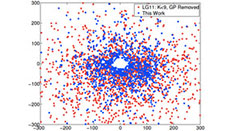 The Exoplanet Characterisation Observatory, EChO,will be the first dedicated mission to investigate the physics and chemistry of Exoplanetary Atmospheres.
The Exoplanet Characterisation Observatory, EChO,will be the first dedicated mission to investigate the physics and chemistry of Exoplanetary Atmospheres.
Telescopes at Bayfordbury will be monitoring bright M-dwarf stars for exoplanet transits, as potential targets for the EChO mission.
Detection of tropospheric desert dust
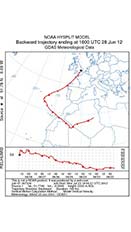 Mineral dust in the atmosphere is now acknowledged to be an important source of nuclei for the growth of cold clouds such as cirrus.
Mineral dust in the atmosphere is now acknowledged to be an important source of nuclei for the growth of cold clouds such as cirrus.
Surprisingly, dust from deserts such as the Sahara can travel over very large distances.
The Lidar and sun photometer at Bayfordbury are used to detect the presence of mineral dust in the atmosphere.
You can view more details of a Saharan dust event in 2012.
Cirrus climatology from ground-based remote sensing
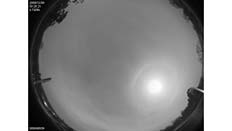 Cirrus clouds are thin, could clouds composed of ice crystals.
Cirrus clouds are thin, could clouds composed of ice crystals.
Cirrus clouds have significant influence on climate as they influence the radiative balance of the Earth's atmosphere, and somewhat counter-intuitively can have an overall warming effect.
Climate models must therefore accurately represent cirrus clouds.
The radiometers, lidar and all-sky cameras at Bayfordbury are used to determine the occurrence and radiative influence of cirrus clouds, for comparison with the Met Office numerical models.
Cloud spectropolarimetry
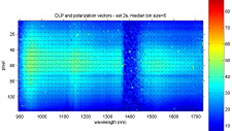 Polarimetry is a technique frequently used in astronomy, especially to characterize the properties of interstellar dust.
Polarimetry is a technique frequently used in astronomy, especially to characterize the properties of interstellar dust.
Terrestrial applications of polarimetry are less well developed.
The Specpol polarimeter at Bayfordbury is used to characterize the properties of cirrus clouds in the atmosphere, by measuring the polarization of scattered light across a broad spectrum of infrared wavelengths.
Multi-Bandwidth Monitoring of Cataclysmic Variables Identified by SuperWASP
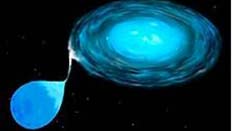 The SuperWASP survey to find exoplanets also detected some binary stars.
The SuperWASP survey to find exoplanets also detected some binary stars.
In a binary system known as a Cataclysmic Variable (CV) consisting of a white dwarf orbiting close to a red giant, the red giant loses some of its matter causing a regular flare up of activity. This material initially orbits the white dwarf in an accretion disc. These interactions can cause very large changes in the optical brightness.
Several CVs have been identified by the SuperWASP team. A new research project just started my MSc student Peter Beck at Bayfordbury will obtain many brightness measurements for a number of these CVs over many orbits; a light curve will then be produced for each binary star by plotting the brightness against time and then compressing it into a single orbit.
As Bayfordbury is uniquely able to simultaneously robotically control five telescopes, the plan is to use each telescope to record brightness at a different optical bandwidths. Five linked light curves will be generated for each CV and used to investigate the interactions in far greater detail than has been achieved with SuperWASP.
Cirrus detection through infrared radiometry
PhD student Paolo Dandini is currently researching cirrus detection through radiometry using the Heitronics KT15II infrared radiometer, and detecting halos in AllSky camera images using image detection techniques.
In the coming months a more quantitative analysis will be done by using data from the solar photometer to obtain the cloud optical depth, and a further two new radiometers will be installed at Bayfordbury which will be able to measure short and long wave fluxes at the ground. These measurements in particular will be compared to the high resolution weather prediction model calculated by the Met Office.
High Sensitivity Solar Polarimetry
The measurement of the degree of polarization present in the solar disk is challenging because of the very small values averaged over the disk. In earlier work by J.C Kemp fractional polarizations of ~2xe-7 over the whole solar disk were measured with a photo-elastic modulator based polarimeter at high altitudes.
A similar instrument has been recently constructed at the university's Centre for Atmospheric and Instrumentation Research for measuring very small polarizations from the sun but with an emphasis on detecting the polarization resulting from atmospheric scattering of cirrus clouds and atmospheric dust.
The instrument is currently installed in a new robotic dome at Bayfordbury and will be operated remotely by Prof. Bill Martin during clear weather to record polarization data over the long term.
Preliminary results indicate fractional polarizations of ~2xe-5 linear polarization and ~1e-7 circular polarization are typical of the Bayfordbury site during clear weather without significant dust but these values are superimposed on a 'pedestal' of azimuthal polarization from Rayleigh scattering of about 1e-4. The latter was not observed by Kemp due to the way their data was processed.
